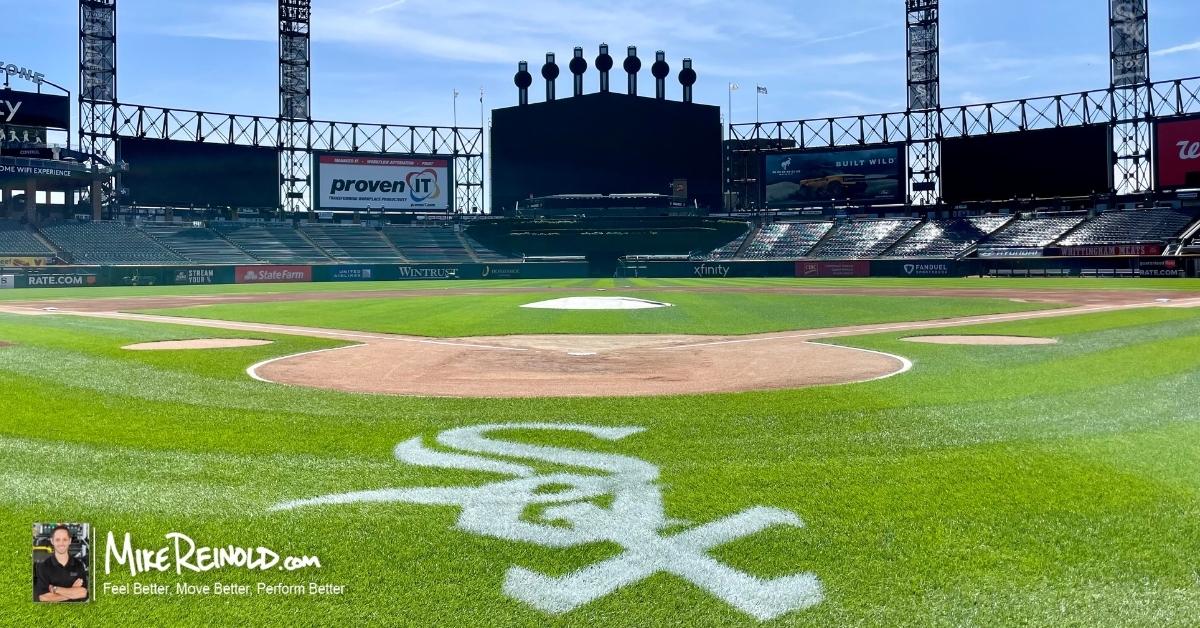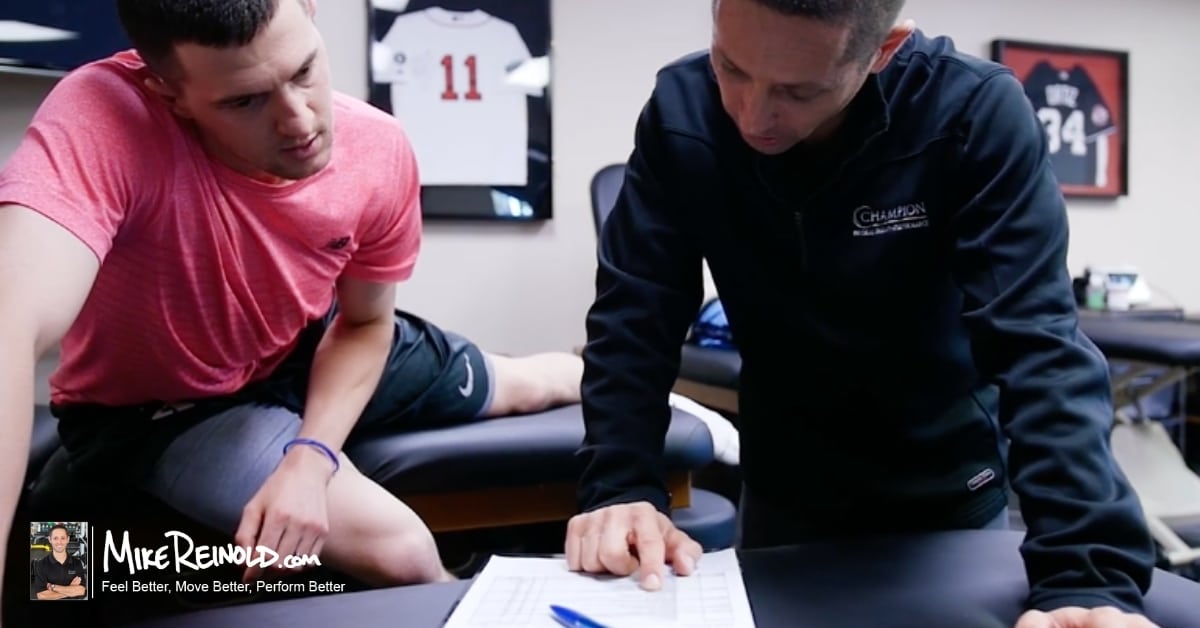About once or twice a year, I like to ask a a bunch of experts in a broad range of fitness, sports medicine, rehabilitation, and performance specialties to answer one question for my readers. In the past I accumulated the best career advice for sports medicine and performance as well as formulated a comprehensive essential reading list for sports medicine and performance (which I need to update this summer…).
These are by far some of my favorite types of posts as I receive so much feedback from my readers on how much these posts have helped them. It is hard to get advice from experts in our field, so being able to provide this to my readers is awesome!
This year’s question was simple:
What have you done differently this year?
I received a ton of nice responses, and I will share my answer to this question at the end as well. There are some amazing and inspiring answers below. There are also some trends that seem to appear:
- We need to start thinking out side the box and probably more importantly outside the text book
- We need to appreciate a wider approach to rehabilitation and performance and think about the integration of total body, movement awareness, and multiple systems (musculoskeletal, fascia, neuroscience, etc)
- We need to use advanced techniques but master the basics first
- We need to never to stop learning, adapting, learning, adapting…
Charlie Weingroff
I have come to appreciate that kinesiology, biomechanics, and EMG don’t lie, but they rarely tell the whole story. Just because things are in the “literature,” doesn’t completely validate their message. Often things are in the literature because they are easy to measure and can be studied in univariant environments. It is important to look past the literature into the neuromuscular model which is inherently much more difficult to develop research around.
Charlie Weingroff
Erwin Valencia

E Benedict Valencia
Pittsburgh Pirates
Ken Crenshaw

Hope this helps as it really seems simple but many times simplifying is improving.
Ken Crenshaw
Arizona Diamondbacks
Bret Contreras

When training everyday folks, know that full range resistance exercises with good form will do more for their “functionalism” than just about anything. It will increase their mobility, stability, motor control, breathing function, posture, hypertrophy, strength, power, and endurance.
I used to feel overwhelmed thinking that I had to include every method in existence to the point where my programs were too crammed. Now I just view all folks as being on a certain continuum with each movement pattern and my job is to get them better at squatting, lunging, hip hinging, hip thrusting, vertical and horizontal pressing, and vertical and horizontal pulling.
I used to think the secret to curing knee pain was all about the hips, now I know that it’s often more complicated and that strong quads are important too.
I used to be afraid of strengthening certain muscles – for example the psoas and the upper traps. Now I believe that every muscle and every muscle part should be strong through a full ROM to maximize body function.
For core stability training, I used to only consider the lumbar spine; now I also consider the pelvis and believe that proper pelvic strength and stability is one of the most underrated aspects of ridding and preventing low back pain.
When training sprinters, I believe coaches should focus the vast majority of their strength training efforts on strengthening hip extension and knee flexion and get the glutes and hammies strong and powerful. I feel that many coaches overvalue the importance of certain movements patterns or muscles when training for speed and shouldn’t worry so much about the upper body, the core, or the quads for this group of athletes.
When training women who simply want to look better, I used to prescribe too much work for the upper body and quads. These days their training sessions focus mostly on the gluteus maximus. It’s not always an easy muscle to re-shape, but if you succeed they’ll never want to give up training! Not to mention the fact that hip extension exercises effectively raise the metabolism especially as strength improves so you’re essentially performing HIIT training to help lean them out.
These are just some of the things I’ve changed up in the past year.
Bret Contreras
Anna Hartman

The movement practices of Pilates, gyrotonic, feldenkrais, and Tai Chi have really been able to teach me what it means to really move from the center and how important spinal movement or mobility is to truly find stability and the movement from your center. These movement practices have allowed me to take a closer look at the myofascial system as a whole, pulling from the likes of Tom Myers and his “Anatomy Trains” and tensegrity to James Oschmann and “Energy Medicine”. As well as a closer look at the bony and visceral anatomy and how everything slides, glides, and spins together to create efficient movement pulling from Eric Franklin and his “Dynamic Alignment Through Imagery” and use of small props to create a movement experience for the athletes to feel efficiency, stability, and moving from their center without spending a lot of time in the unconsciously incompetent stage of motor acquisition.
All in all I have been inspired by the passion for learning, doing, and sharing by the many movement practitioners I have encountered along the way, regardless of the letters behind their name or yours there is something to be learned; something to be shared, to improve, grow and truly be able to support someone with their health and happiness.
Anna Hartman
Athlete’s Performance
Dean Somerset

Dean Somerset
Tom Myers

Tom Myers
Michael Boyle

We have also begun to implement more half kneeling exercises in an in-line split position. I think this creates a different type of core challenge to diagonal pattern work like chops and lifts.
Michael Boyle
Eric Cressey

At the end of a long baseball season, everyone assumes that you’re just going to be managing tired arms, but the truth is that you likely see as many cranky hips and lower back after a year of aggressive extension and rotation. Many people will try to progress professional athletes too quickly because they assume a base level of fitness, but the truth is that you need some time to not only build back up “weight room work capacity,” but reapply the basics.
So, last fall, we did more prone and side bridges, birddogs, reverse crunches, and get-ups than before – and we did them for a longer period of time. Over the course of the off-season, they went from building initial stability to being low-level motor control exercises we could use as “reminders” of where neutral spine was.
We combined these exercises with a ton of soft tissue work (both foam rolling and manual therapy, particularly on adductors), and it led to what I’d call the healthiest hips and lower backs I could have foreseen in our 70+ professional baseball players.
Eric Cressey
Mike Robertson

Mike Robertson
http://robertsontrainingsystems.com/
Patrick Ward

Patrick Ward
http://optimumsportsperformance.com/blog/
Jeff Cubos

Jeff Cubos
Sue Falsone

Sue Falsone
Los Angeles Dodgers
Mike Reinold

- With the large trend towards “function” and “movement,” as well as the explosion of information sharing on the internet, I feel that we sometimes get excited with our progressions and get to fancy too quickly. I know I have been guilty of this in the past. My new (or should I say “renewed”) focus has been on quality over quantity. While this is important in rehabilitation, this is even more important in performance training. Compensatory movement patterns will always catch up with you over time. This was a huge reason why Cressey and I wanted to create our Functional Stability Training of the Core program.
- The huge trend towards “movement” seems to mean mobility to a lot of people. I often find that movement quality issues tend to be even more related to poor “stability.” Don’t get me wrong, you need both, but being stable in your limited mobility is much better than being mobile without stability over the long run. In fact, too much mobility my be even worse.
- Manual therapy and corrective exercise needs to be three dimensional in many ways – planes, motions, depths, etc. The glute max is just as important of a hip external rotator and abductor as it is an extensor. In addition to planes of motion, soft tissue needs to be pliable at every depth. One soft tissue approach is, well, one dimensional. I now try to focus my manual work on several layers of depth of the tissue, and this requires different techniques to achieve optimal results.
Hope this summary provides some great advice and more importunely motivation to continue improving yourself. Think about it, if all these great experts keep doing things differently, shouldn’t we all?
Help me really spread the word about this post and email, tweet, share, like, poke, pin, +1, and anything else that exists right now that I don’t even know about!
Did you notice that there were only 14 people on the list above? The 15th “expert” is you. Let’s not stop here, comment on this post below and share what you have done differently this year too! THANKS!
[hr]





